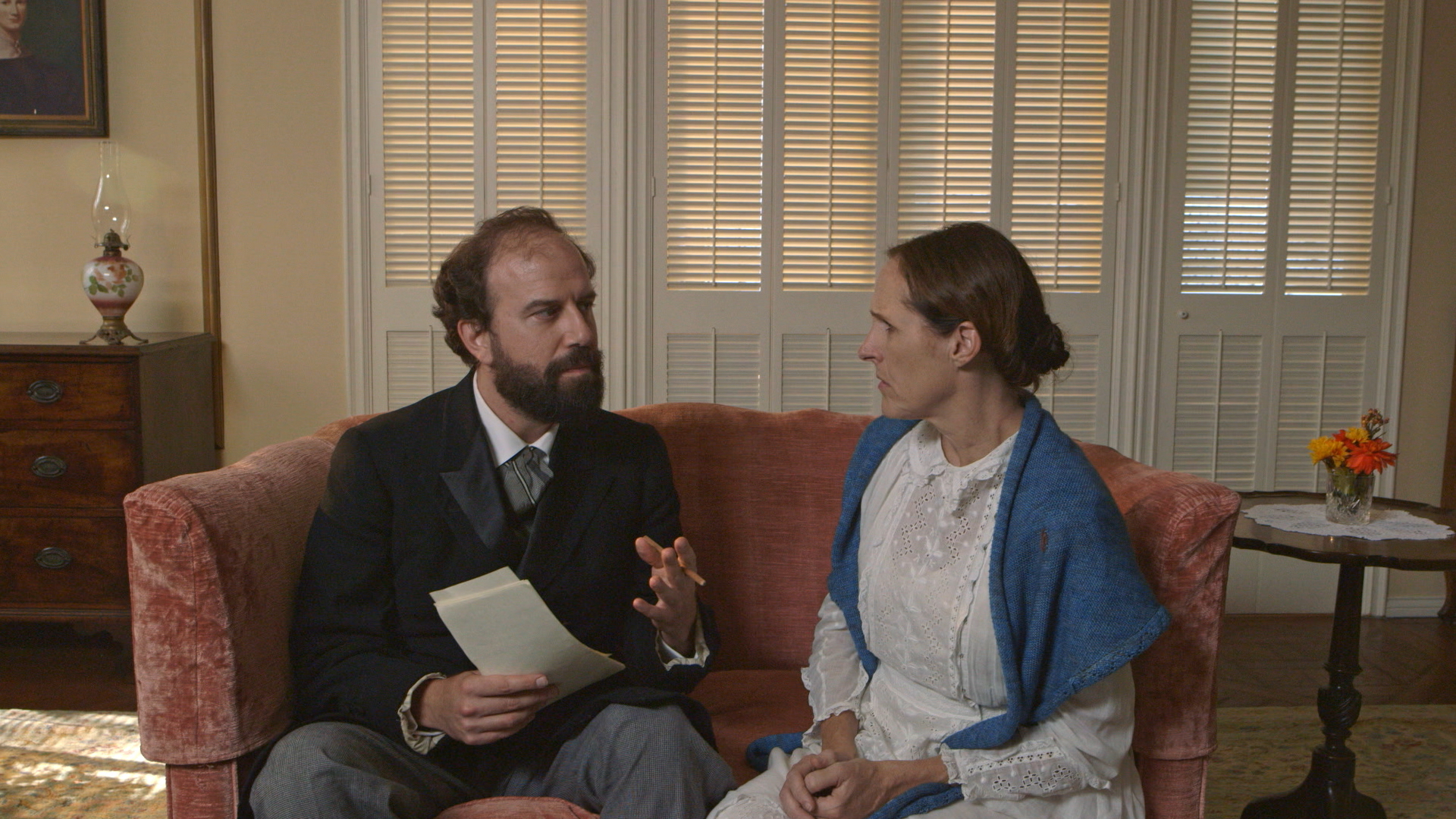When Wild Nights With Emily came out last year, some critics questioned the poet’s portrayal as a vibrant woman, who loved other women to boot. In this story from our archives, the film’s director, Madeleine Olnek, tells us about her take on Emily Dickinson—and how she was anything but dreary.
Before she began researching the life of Emily Dickinson, Madeleine Olnek didn’t think much of the famous New England poet.
“I thought she was a miserable drudge,” the writer/director confesses.
“Everything I heard about her in college—she had agoraphobia, she was a recluse who didn’t want people to see her work—created such a creepy, morbid image of her, I honestly had no desire to read her poems.”
There’s not a scrap of that nervy recluse in Wild Nights With Emily, Olnek’s energetic and funny biopic of Dickinson. In its stead is a series of surprises: this Dickinson is witty, eager to be published—and a lesbian.
Dickinson, it turns out, conducted a life-long affair with her sister-in-law, Susan Gilbert. The two passed endless letters back and forth (often delivered by Susan’s children), sharing brief kisses in the pantry as well as illicit bedroom rendezvous under cover of the Victorian-era acceptance of close friendships between women.
In a brilliant stroke of casting, Saturday Night Live alum Molly Shannon plays Emily, eyes a-twinkle with an inner life ready to explode.

Emily (Molly Shannon) writing in Wild Nights With Emily. Courtesy of Greenwich Entertainment.
“One of my most surprising discoveries, and one that really floored me, was how much of a sense of humour Emily had,” Olnek explains. “I don’t think it would be true to her to present a stodgy old period piece—she wasn’t into that kind of self importance.”
And certainly, there is no hint of hushed reverence in Wild Nights With Emily, a comedy drama that blows apart everything we thought we knew about this significant literary figure.
“People who make dramas always seem to think that if they present their material with weight, that it will have weight,” notes Olnek. “But presenting something reverentially doesn’t mean that it has meaning. Part of what was going to give this story meaning was presenting Emily Dickinson as a real person. She had a real life, she had people she talked to, she was a writer and she loved words—of course she was talking to people.”
After its premiere at SXSW Film Festival earlier this year, Olnek’s movie received blowback from some critics who questioned her portrayal of Dickinson as a lesbian, asserting that this was simply another fiction or, more pointedly, a politicized revisionism. The reaction was enormously frustrating and upsetting, Olnek admits.
“I felt that a large part of the value of this film is the story of Emily that it is telling,” she explains. “And if that’s a made up story, then the movie doesn’t have much value.
“It’s not wrong for people to question it,” she adds, quickly. “It’s certainly quite bizarre, and you do think, ‘How come I’ve never heard of it before? This is wild.’”
Bruised and infuriated by the reaction, Olnek sat down and wrote a 30-page document—“as if I was going to trial”—detailing her research and sources. In it, she provides details of the correspondence and other evidence she drew upon. She argues that Dickinson’s image as a neurotic recluse was constructed and then shored up by general misogyny, complex family machinations, and even a latter-day effort in the 1950s to protect her work from McCarthyism—when homosexuality was regarded as akin to communism, and a book was published about another affair Dickinson had with a woman who lived openly as a lesbian.

Higginson (Brett Gelman) takes a knife to Emily’s (Molly Shannon) poems in Wild Nights With Emily. Courtesy of Greenwich Entertainment.
“It would be the equivalent of news that she spent a summer with Melissa Etheridge,” Olnek notes. “People were afraid Emily Dickinson was going to stop being taught in schools. They were afraid her legacy was going to be ruined and that people weren’t going to read her anymore. And it could be argued a lot of those same reasons are still as relevant today.”
“There’s a lot of negative baggage attached to being a woman who wants to get her voice out in the world.”
If Dickinson dealt with the sexism of her time with humour, Olnek believes that’s still the smart way to go.
“Lectures shut people down,” she argues. “But humour is a form that invites people to think. The term ‘mansplaining’ has been really effective in making people stop and think. And that’s a comedy term. It’s a comic idea.”
This story from our archives was originally published on June 10, 2019. Read more from the Arts.








